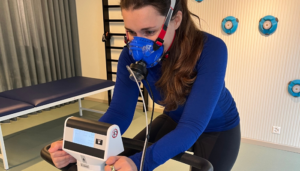Proteostasis, or protein homeostasis, is the process by which the cell maintains the correct balance of protein synthesis, folding, and degradation.
This is crucial for maintaining the proper function of proteins involved in almost every cellular process. However, as we age, the ability of the cell to maintain proteostasis gradually declines, leading to the accumulation of misfolded, damaged, or otherwise dysfunctional proteins.
This is referred to as the loss of proteostasis, and it is a hallmark of ageing associated with various age-related diseases.
The accumulation of misfolded or damaged proteins can form aggregates, such as intracellular inclusion bodies or extracellular amyloid plaques, commonly found in age-related diseases like Alzheimer’s, Parkinson’s, and Huntington’s diseases.
These aggregates can interfere with normal cellular function, leading to cellular stress and inflammation.
Several mechanisms can contribute to the loss of proteostasis. One is the production of erroneous or incomplete proteins due to errors in translation.
Genetic manipulation of ribosomal proteins in model organisms has been shown to extend lifespan or cause premature ageing, depending on whether it improves or impairs translation accuracy, respectively.
Another mechanism is the accumulation of oxidative damage in proteins, which can interfere with their normal folding and function.
This can be exacerbated by the decline in chaperone activity with age, as chaperones are responsible for helping proteins fold correctly.
Additionally, some protein mutations render them intrinsically prone to misfolding and aggregation, which can saturate the mechanisms responsible for protein repair, removal, and turnover.
Furthermore, proteostasis loss can occur when quality control mechanisms fail. For example, the unfolded protein response (UPR) in the endoplasmic reticulum can become reduced with age, compromising the stabilization of correctly folded proteins.
Mechanisms for the degradation of proteins by the proteasome or the lysosome may also become insufficient, leading to an accumulation of mono-ubiquitinylated proteins in ageing tissues.
Protein degradation by the lysosome can be achieved through chaperone-mediated autophagy (CMA), wherein proteins with a specific pentapeptide motif first bind to heat shock protein HSC70 and then to lysosome-associated membrane protein type 2A (LAMP2A), which facilitates the translocation of the client protein into the lysosome.
Hepatic LAMP2A expression declines with age in mice, and its transgenic re-expression reduces liver ageing. Macroautophagy can also remove protein aggregates upon their inclusion in autophagosomes, which are two-membrane vesicles that later fuse with lysosomes.
Numerous studies have demonstrated that experimental amelioration of proteostasis can retard the ageing process. For example, the administration of chemical chaperones to aged mice or the transfection-enforced overexpression of isolated proteasome subunits in nematodes and flies has been shown to improve proteostasis and increase lifespan.
Stimulation of CMA by transgenic expression of LAMP2a or by pharmacological enhancement has been found to improve the survival of targeted cell populations in mice and attenuate Alzheimer’s pathology and arteriosclerosis.
In addition, certain system-based interventions have been studied for their ability to support protein integrity and function, including fasting, certain probiotics (e.g., Bacillus subtilis), and specific polyphenols (e.g., quercetin). These approaches seek to remove as many of the causes of protein dysfunction as possible to minimize the loss of proteostasis.
Clinical trials, such as the ReCODE method developed by Dr. Dale Bredesen, involve a systems-based approach to improve cognitive function in patients with early Alzheimer’s. This approach includes interventions such as diet, exercise, stress reduction, and targeted supplements to address multiple factors contributing to cognitive decline, including proteostasis disruption.
In addition to the interventions mentioned above, other strategies have shown promise in supporting proteostasis and delaying ageing. For example, administering the chemical chaperone 4-phenylbutyrate to aged mice has been shown to reduce ER stress in the brain and improve cognition. Transgenic expression of LAMP2a HSCs has also been shown to improve the survival of targeted cell populations in mice by stimulating CMA.
Similarly, intranasal application of recombinant human HSP70 protein to mice enhances proteasome activity, reduces brain lipofuscin levels, enhances cognitive functions, and extends lifespan.
Furthermore, studies have shown that certain genetic manipulations can affect proteostasis and ageing. For instance, genetic manipulation of the ribosomal protein RPS23 to improve the accuracy of RNA-to-protein translation extends lifespan in various model organisms. In contrast, a mutation in RPS9 that favours error-prone translation causes premature ageing in mice. Mutations in proteins that render them intrinsically prone to misfolding and aggregation can also cause numerous age-related neurodegenerative diseases, including ALS and Alzheimer’s disease, by saturating protein repair, removal, and turnover mechanisms required for the maintenance of the healthy state.
Proteostasis disruption is a hallmark of ageing that is associated with the accumulation of dysfunctional proteins in the body. This can lead to inflammation, organ dysfunction, and even cancer development. However, various interventions such as fasting, certain probiotics, and specific polyphenols have been studied for their ability to support protein integrity and function.
Genetic manipulations and targeted interventions such as chemical chaperones and HSP70 proteins have also shown promise in improving proteostasis and delaying the ageing process.
Understanding the mechanisms behind proteostasis collapse and developing interventions that promote proteostasis may provide new avenues for delaying age-related diseases and extending healthy lifespan.
Disabled Macroautophagy
Macroautophagy, also known as autophagy, is a cellular process that plays a crucial role in removing cellular waste products, including damaged organelles and invading pathogens.
It involves the sequ…









